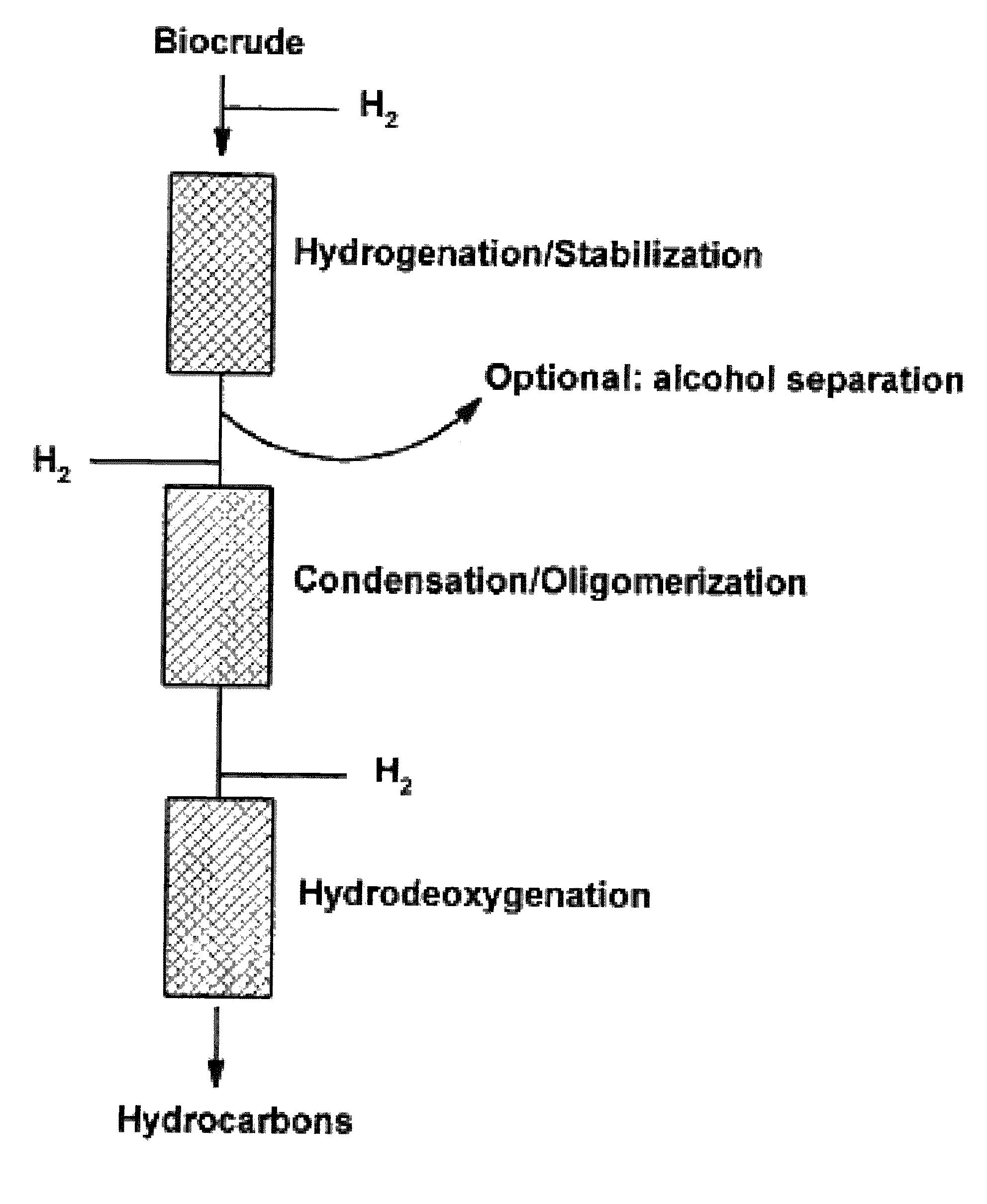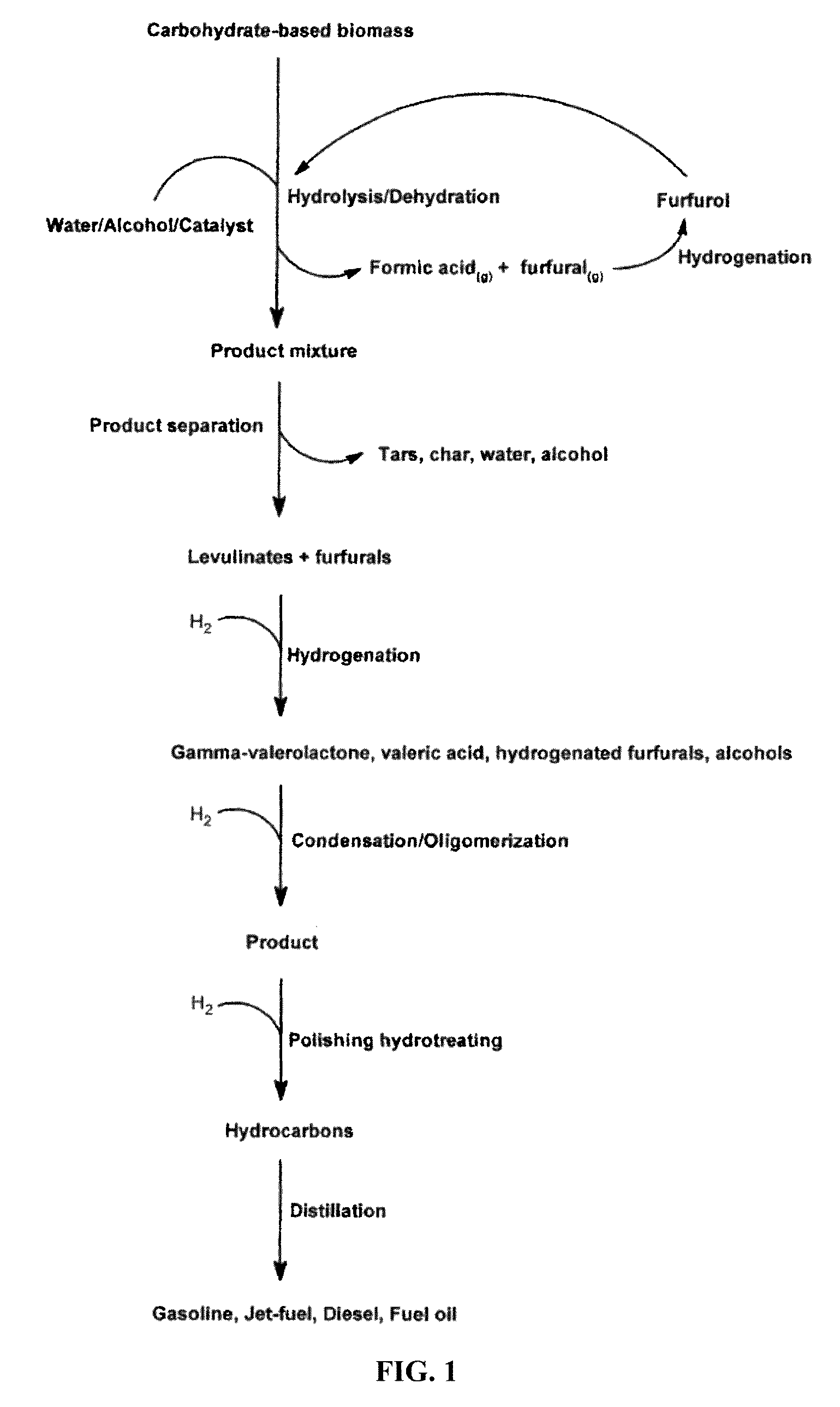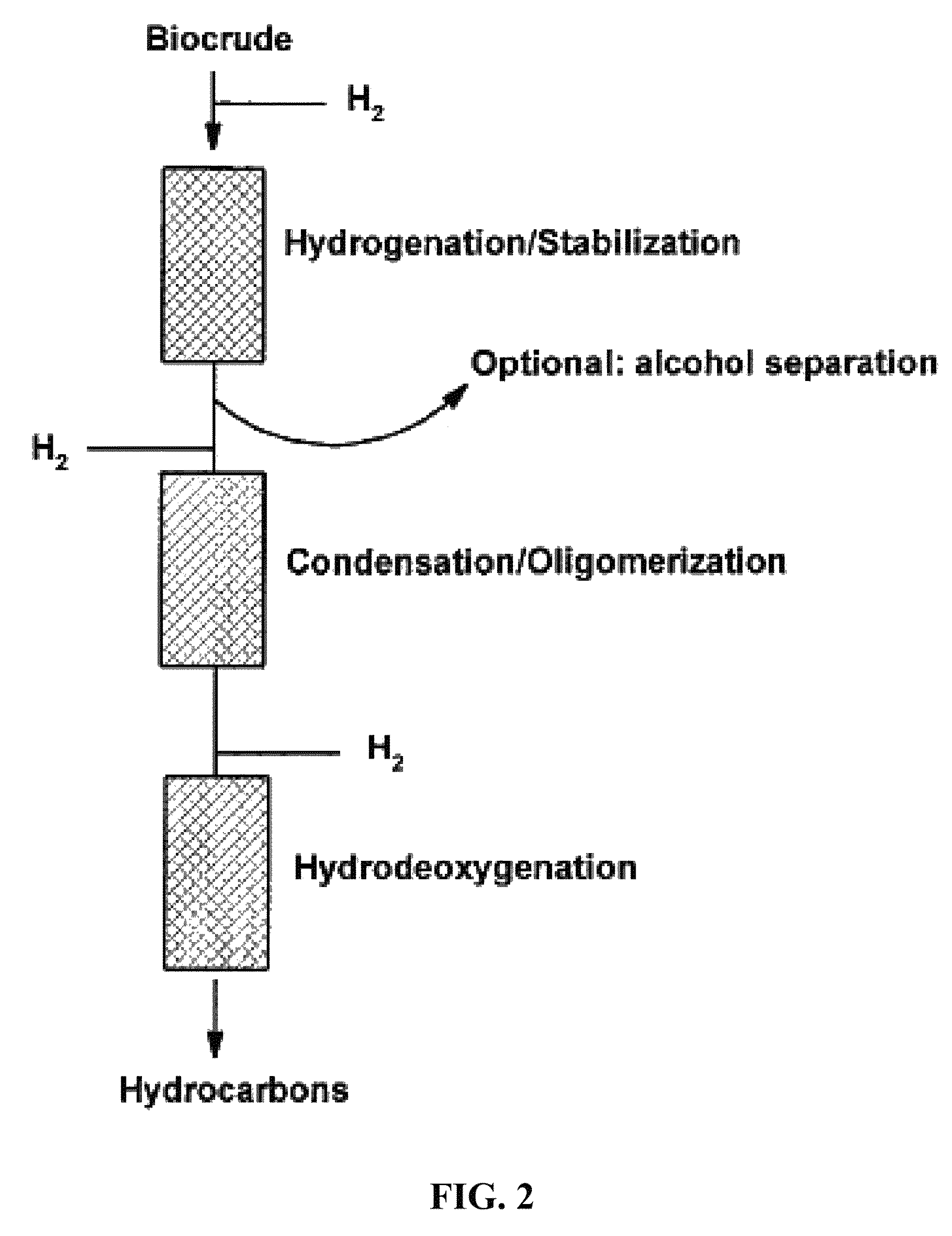Transportation fuels from biomass oxygenates
a technology of transporting fuels and oxygenates, which is applied in the direction of hydrocarbon oil treatment products, metal/metal-oxide/metal-hydroxide catalysts, physical/chemical process catalysts, etc., can solve the problems of engine fouling, serious performance and stability problems of established biofuels, such as ethanol and biodiesel, and unacceptable corrosion in both blending equipment and consumer cars
- Summary
- Abstract
- Description
- Claims
- Application Information
AI Technical Summary
Benefits of technology
Problems solved by technology
Method used
Image
Examples
example 1
50% wt Levulinic Acid
[0051]Levulinic acid as a 50 wt % solution in water was fed to a packed-bed reactor containing a 5 wt % Ru / C catalyst at 100° C. 400 psig (H2) and WHSV=0.5. Table 1 shows results for the experiment.
[0052]
TABLE 1Results from the hydrogenation of levulinic acidon Ru / C (unidentified products are not shown).% Levulinic% YIELDacid1,4-2-2-ProductconversionGVLPentanediolButanolPentanolDay 199.846.88.421.441.4Day 299.762.512.972.93.3Day 399.860.112.33.54
[0053]The Ru / C catalyst was stable under the reaction conditions. Levulinic acid was converted to hydrogenated products including GVL, 1,4 pentanediol, 2-butanol, and 2-pentanol. These hydrocarbons are good precursors for subsequent isomerization, dehydrogenation, and / or other upgrading.
example 2
80% wt Levulinic Acid
[0054]Levulinic acid as a 80 wt % solution in water was fed to a nickel-based catalyst at 200-250° C., 800 psig, LHSV=0.1 hr−1, H2 / LVA mol ratio=13. The conversion of levulinic acid was in the vicinity of 90% at 200 and 250° C.
[0055]
TABLE 2Conversion of levulinic acid on a nickel-based catalystTemperature, ° C.200250Conversion, %93%89%SelectivityGVL98%13%VA 2%76%
[0056]Changing the temperature from 200° C. to 250° C. changed the selectivity of the product producing more GVL at 200° C. and more VA at 250° C. (Table 2). The hydrogenation conditions can be controlled to generate unique, desirable fuel precursors for oligomerization to useful fuel products.
example 3
[0057]Hydrogenation of furfural was conducted over a 1 wt % Ru / TiO2 catalyst. The feed was 20 vol % furfural in 80 vol % ethanol. Reaction conditions were controlled at 200° C., 1000 psig, and a hydrogen flow of 400 mL / min. Liquid hourly space velocity (LHSV) was varied from 1.0 h−1 to 2.0 h−1. Furfural was completely converted at the reaction conditions. The major products were mono-alcohols (1-butanol, 1-pentanol, 2-pentanol), hydroxymethyl-THF, methyl-THF and THF. Product mole % yields are shown in FIG. 3.
PUM
| Property | Measurement | Unit |
|---|---|---|
| pressures | aaaaa | aaaaa |
| temperatures | aaaaa | aaaaa |
| temperatures | aaaaa | aaaaa |
Abstract
Description
Claims
Application Information
 Login to View More
Login to View More - R&D
- Intellectual Property
- Life Sciences
- Materials
- Tech Scout
- Unparalleled Data Quality
- Higher Quality Content
- 60% Fewer Hallucinations
Browse by: Latest US Patents, China's latest patents, Technical Efficacy Thesaurus, Application Domain, Technology Topic, Popular Technical Reports.
© 2025 PatSnap. All rights reserved.Legal|Privacy policy|Modern Slavery Act Transparency Statement|Sitemap|About US| Contact US: help@patsnap.com



